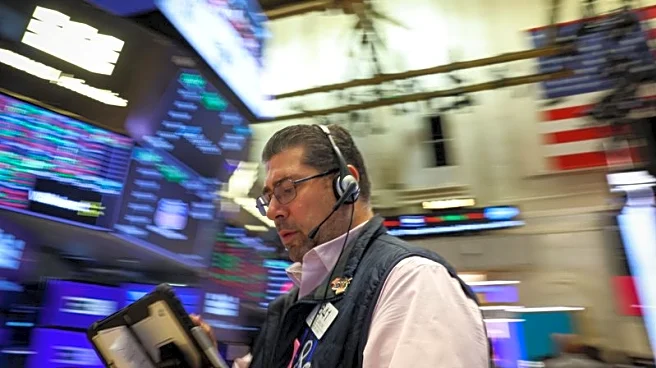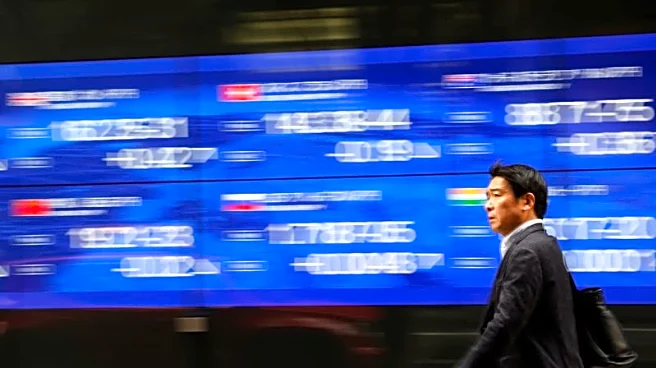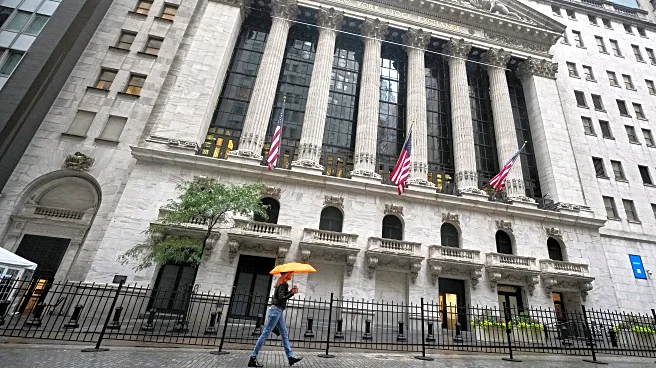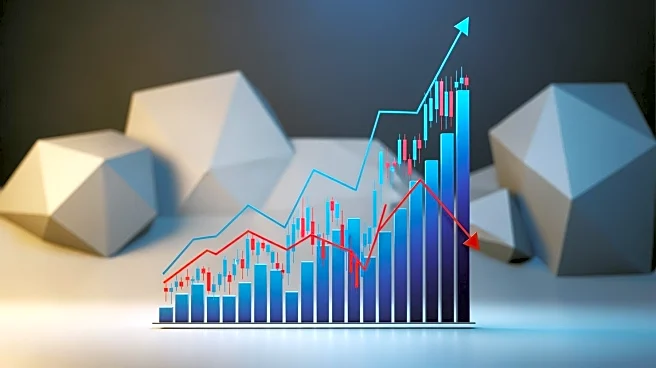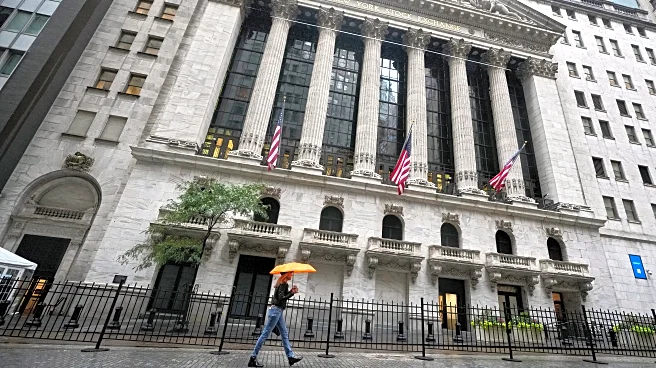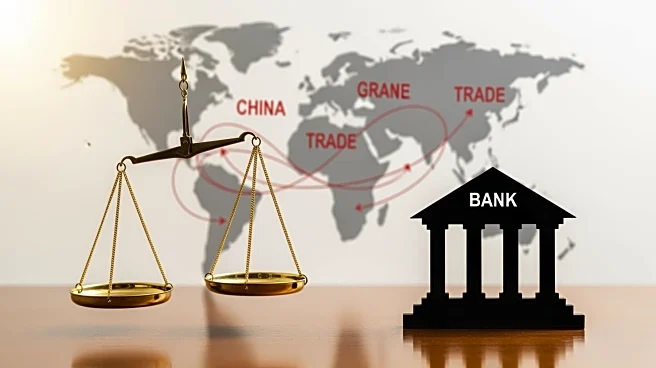What's Happening?
The CBOE Volatility Index (VIX), often referred to as Wall Street's fear gauge, has remained above the 20 mark, indicating elevated market stress despite a rally in stock prices. This unusual correlation
between rising stocks and high volatility is attributed to ongoing trade tensions between the U.S. and China and emerging credit risks. Typically, stocks and the VIX have an inverse relationship, where equities fall when volatility rises. However, the current scenario suggests that either the realized volatility of the S&P 500 needs to increase, or the VIX should normalize to lower levels. Investors are also reacting to the potential end of the U.S. government shutdown and upcoming earnings reports from major companies.
Why It's Important?
The persistent high level of the VIX, despite stabilizing markets, highlights underlying uncertainties that could impact investor confidence and market stability. The ongoing trade tensions between the U.S. and China remain a significant risk factor, potentially affecting global supply chains and economic growth. Additionally, the elevated VIX suggests that investors are seeking protection against potential market downturns, which could lead to increased market volatility. The situation underscores the importance of resolving trade disputes and monitoring credit risks to ensure sustained market growth.
What's Next?
Market participants will be closely watching for any developments in U.S.-China trade negotiations, as a de-escalation could reduce market risks and stabilize the VIX. Additionally, the release of corporate earnings reports will provide insights into the health of the U.S. economy and could influence market sentiment. Investors will also be monitoring the Federal Reserve's actions regarding interest rates, as these decisions could impact market dynamics and investor strategies.


